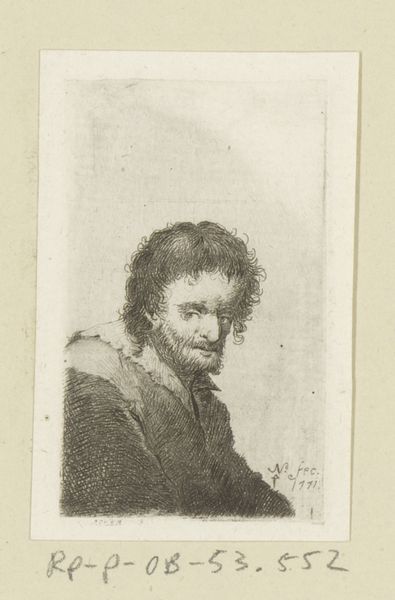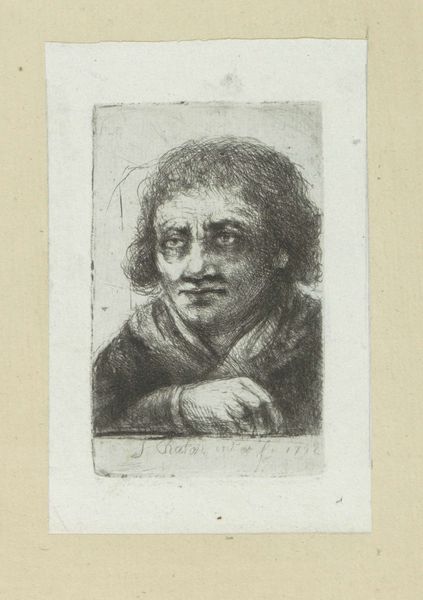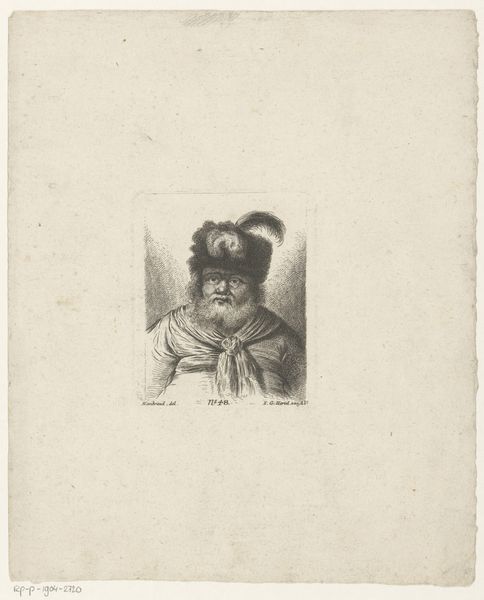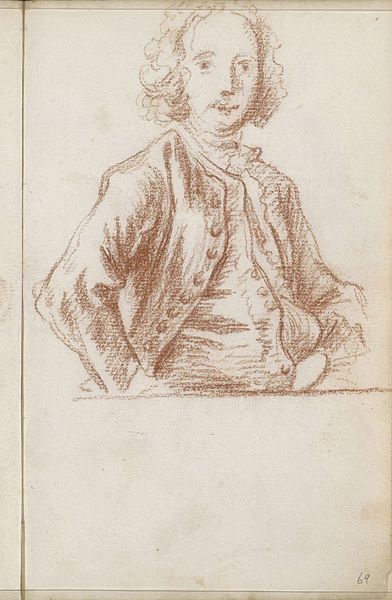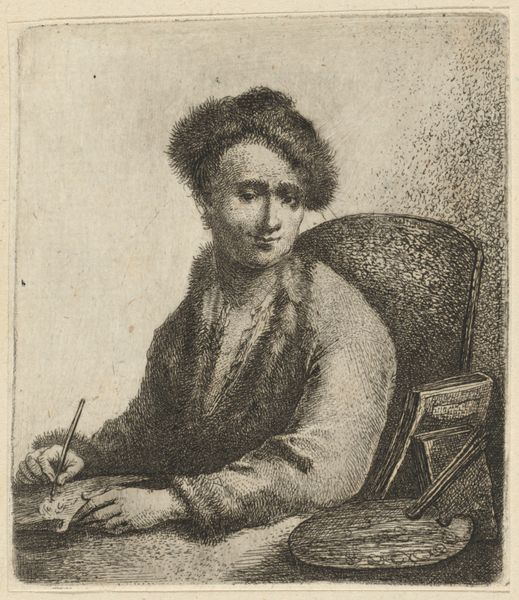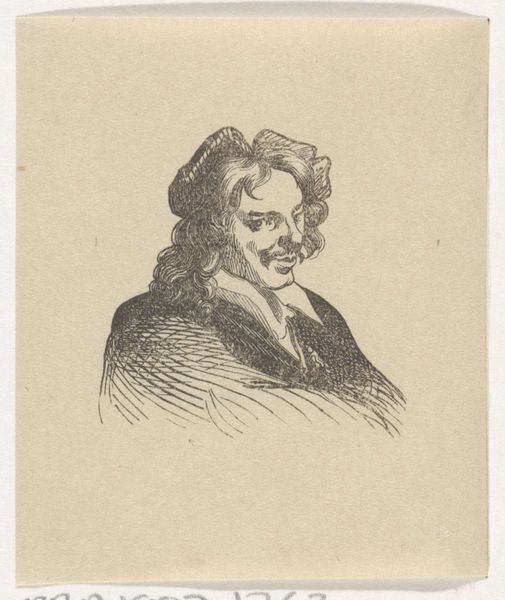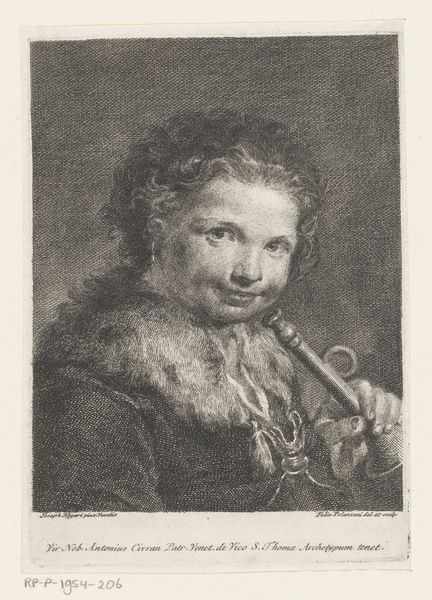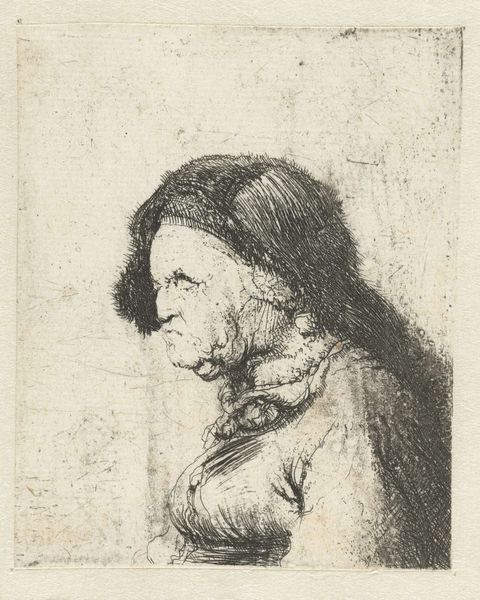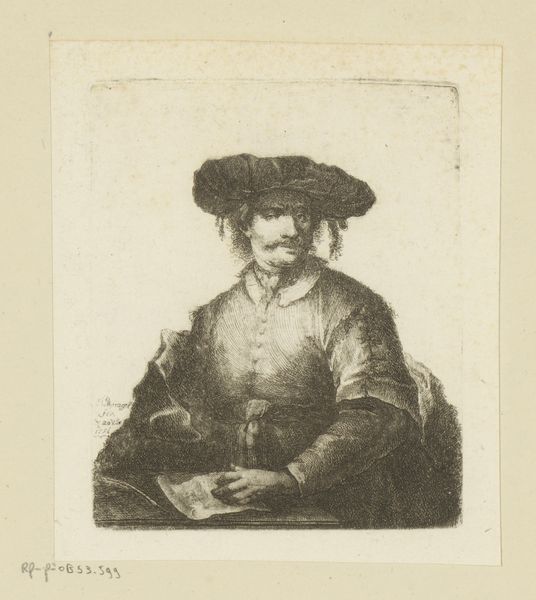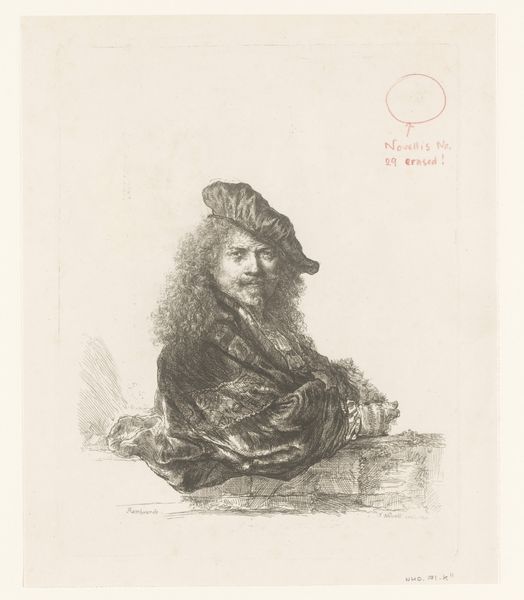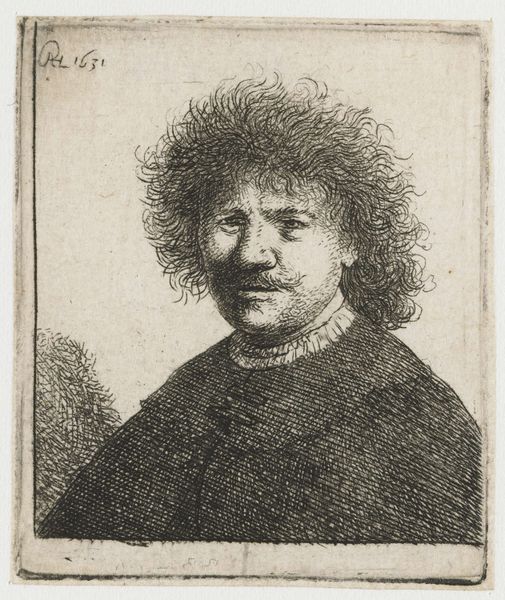
Dimensions: height 70 mm, width 42 mm
Copyright: Rijks Museum: Open Domain
Curator: Johann Andreas Benjamin Nothnagel’s "Boerenman," from 1771, an etching, captures my attention immediately. What's your take as we approach it? Editor: Striking use of line, isn't it? Makes me think about the laborious process. So much human effort goes into these often-overlooked historical prints. The very *making* speaks volumes. Curator: It's a raw intimacy, a whisper across centuries, as if he’s about to confide something – that weary gaze… almost hurts, you know? He’s utterly present, vulnerable. Editor: That vulnerability you feel… it's born, quite literally, from the work. Acid bites into metal, an artisan's hand guiding it all. We’re witnessing labor memorialized. I am thinking what were the original matrix materials of this etching. Curator: You're bringing out the dirt and sweat involved! Yes, it is more than image...it is as you say *the labor*. He may have met this subject somewhere. It feels immediate, an encounter. Editor: Yes. Consider how many impressions were made, each requiring pressure, careful inking… This image was circulated. How many hands did it pass through? These objects are more democratic that painting in many ways. Curator: He does not have the polished appearance, which adds so much to his humanity. And think that in a time of ornate portraiture this everyday face holds a revolution within. What was Nothnagel trying to accomplish with this representation? Editor: Perhaps, by depicting an everyman through the readily accessible medium of print, Nothnagel was aiming to democratize portraiture itself? Curator: Perhaps! He looks about ready to take on some job! Makes me admire and wonder... Editor: Indeed. This seemingly simple print becomes quite layered upon closer material and social inspection. Curator: Absolutely. I sense that we are going to be reflecting on this fellow's hard stare for a long time.
Comments
No comments
Be the first to comment and join the conversation on the ultimate creative platform.
